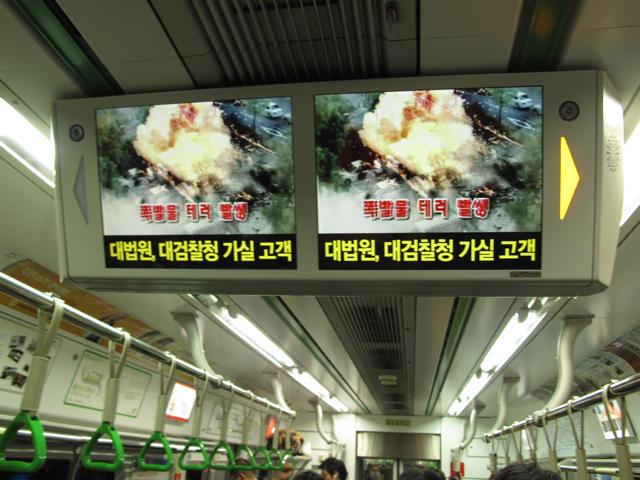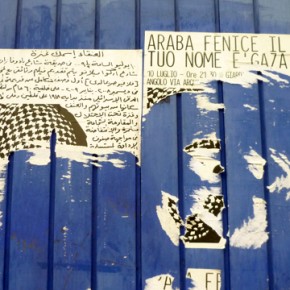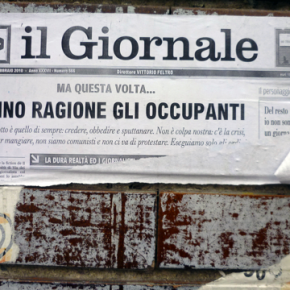My first impulse was to run. Seeing the footage on the video screen, I feared for the worst. The North had attacked, and we were watching it on TV, somewhere deep underneath Seoul. “I’m gonna have to photograph that,” I erupted, hoping that I was being neurotic. As the sequence of events flashed in front of me, depicting a staged raid on South Korea’s capitol, I came to my senses. This was just a training video.
In Seoul for a conference on the Middle East, it was my first trip to the country. Though I’d lived in an Asian neighborhood in San Francisco for eight years, all of the Korean dining I did was insufficient preparation to understand media like this. The most I’d come to know Korea was briefly working with a leftwing novelist from Seoul, who was anxious to leave the country following the election of Lee Myung-bak. Her English was terrible. The publisher I worked for couldn’t afford to hire a translator.

Shocked by the lack of graffiti in the subway (I live in Berlin, and went to high school in Brooklyn in the early 1980s) I imagined what I was watching to be its Korean equivalent, however official and constrained. This was just a different way of telling this city’s story. Raised partially in Israel, I connected with the terror communicated by the violent imagery. In the United States for 9/11, I was also reminded of what it was like to watch the World Trade Center attacks on American TV.

Yet, given such parallels, the sensibilities of this presentation communicated something different. For all the preparation that Israelis receive to deal with rocket attacks – when I was in elementary school, for example, we were simply rushed to a bomb shelter – there are no public educational initiatives as shocking or as graphic as this. Though we lived in a relatively ‘safe’ part of the country, there were still terrorist attacks. The existence of that threat was enough, I guess.

It was only when the presentation moved to the gas mask bit that I began to feel more at home. Gas, of course, having its own iconographic place in Jewish history. The image of the mask, similarly, taking me back two decades to the first Gulf War, when Iraqi missiles were hitting Tel Aviv, and the newspapers continually ran images of violinist Isaac Stern playing with his gas mask on. Looking up at the screen, I could only imagine the fear such imagery must inspire in Koreans.

Arriving back in Germany a week later, I thought back to this subway ride. Examining these pictures on my laptop, wondering how they might be used by Souciant (I photograph and record everything for work, especially when I travel) I berated myself for appealing to Israeli parallels. “This is about Korea, not Israel,” I whispered under my breath, if only because I find Israelis tend to be horrible narcissists. You can understand why. Living from crisis to crisis, there is only Israel.
And yet, thankfully, there isn’t. Imagining the terror that Koreans clearly live with, I can only begin to appreciate the fact that other countries find themselves living with similar pressures, and spend as much time scaring themselves to death as we do. Are Koreans similarly inclined to think and write about Korea, exclusively? It will take a few more visits, I wager, to find out. The novelist I worked with was deeply critical of Korean society. Here’s to learning more about her country.
Photographs courtesy of the author






Reminds me of a forgotten British film from the early 60s by Peter Watkins, a pioneer in the “mockumentary,” except it’s serious, titled “The War Game.” Grim and graphic portrayal of the effects of a nuclear strike on England.
Excellent comparison, Russ. That’s an awesome film. I’d be surprised if the folks who made this Korean video hadn’t seen it.